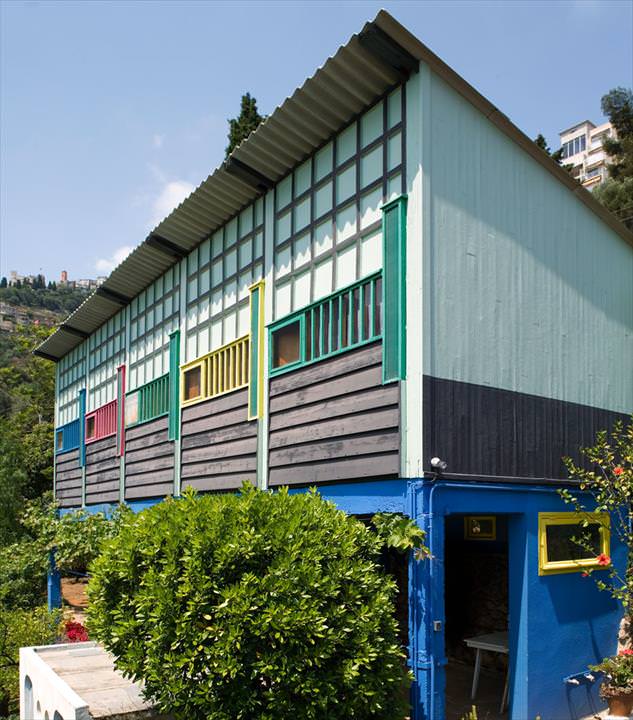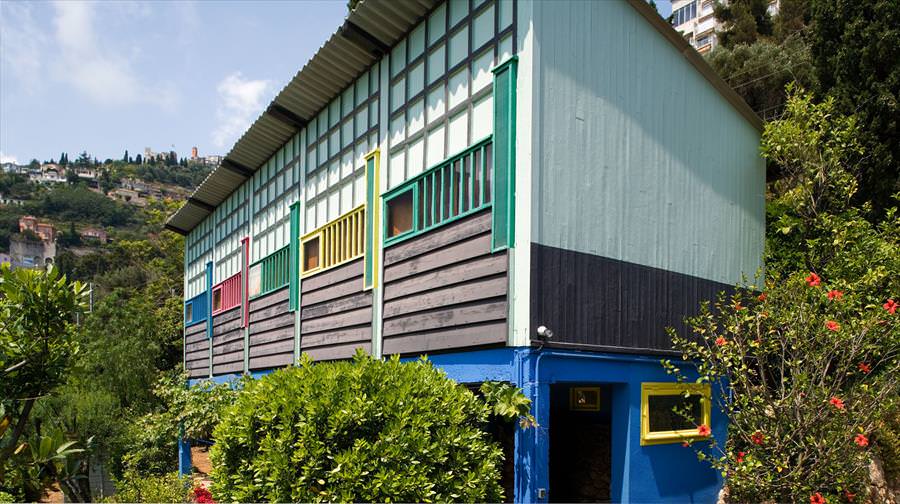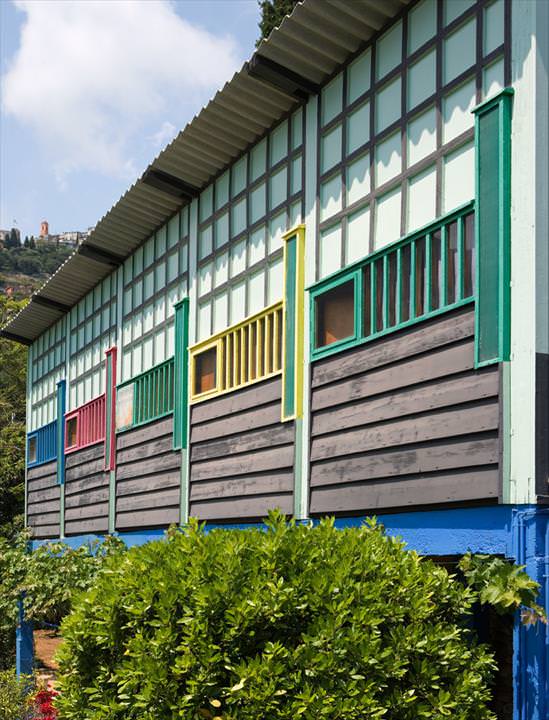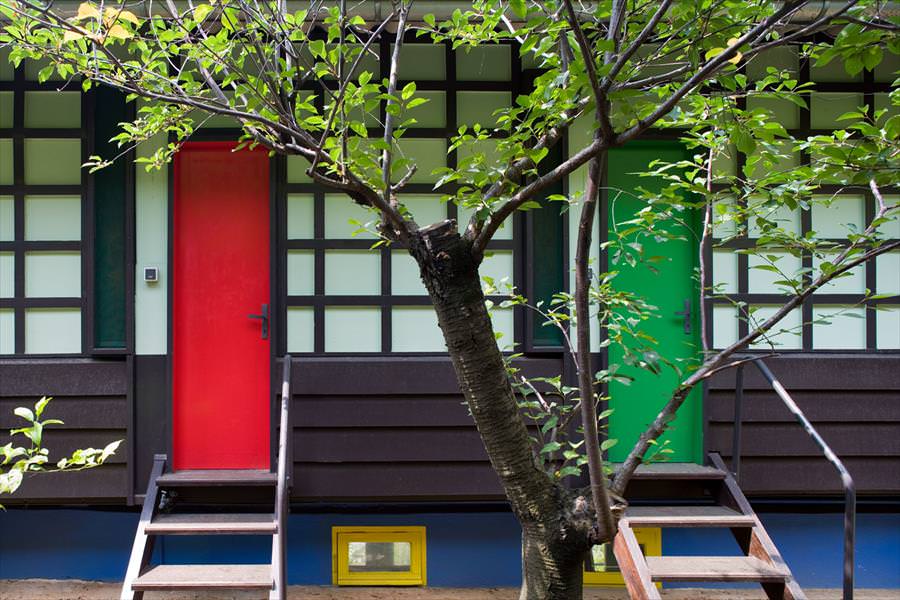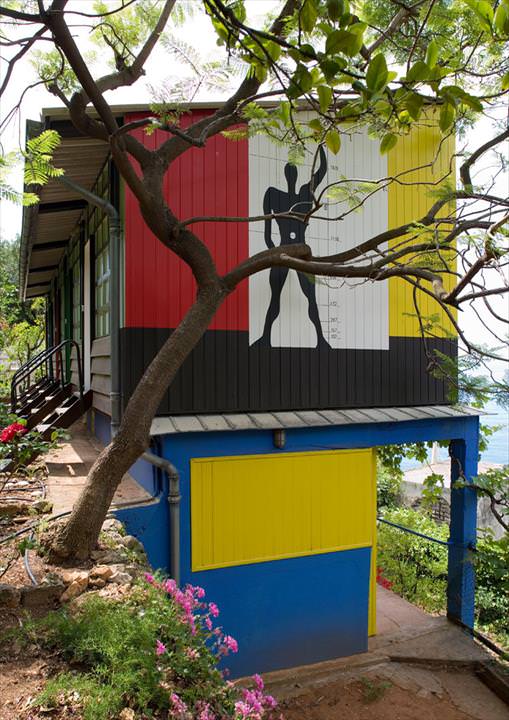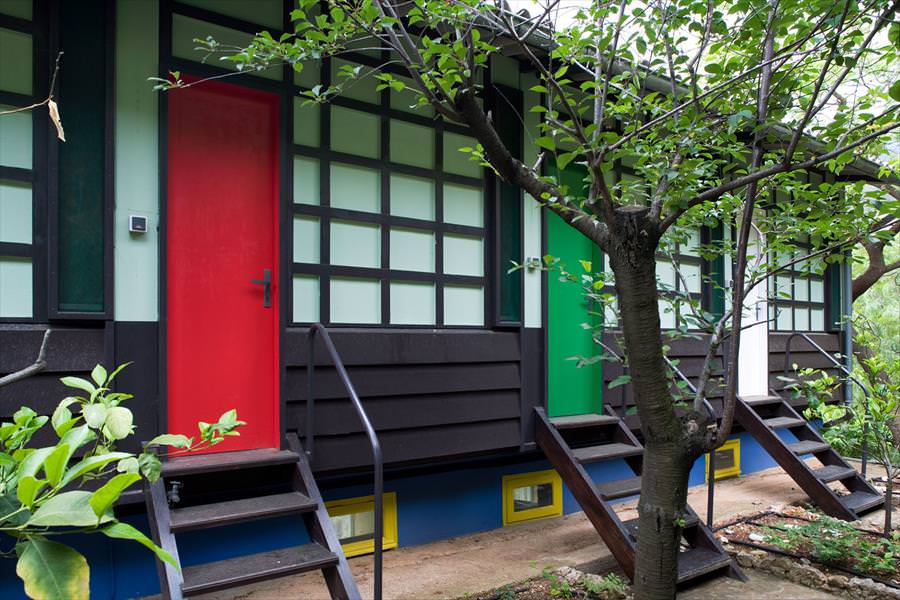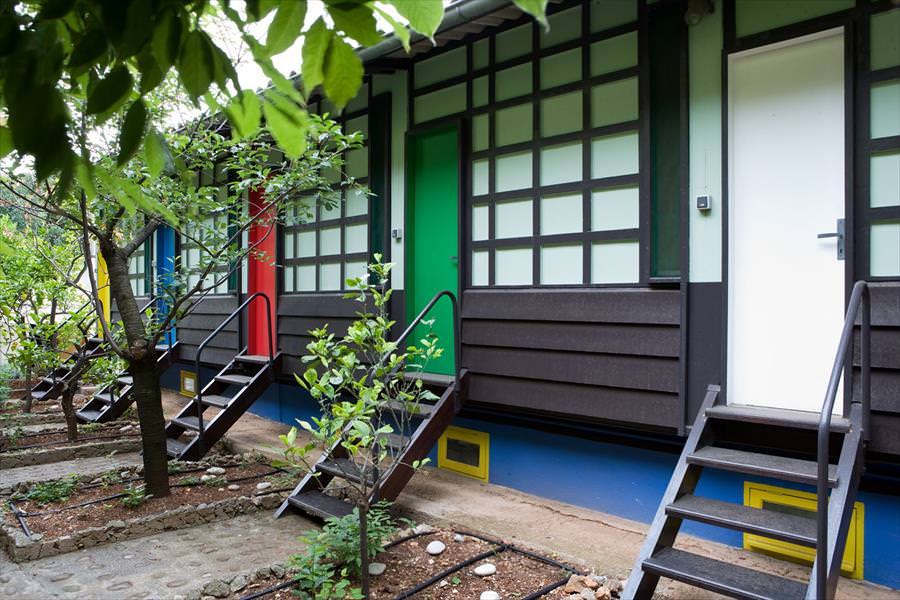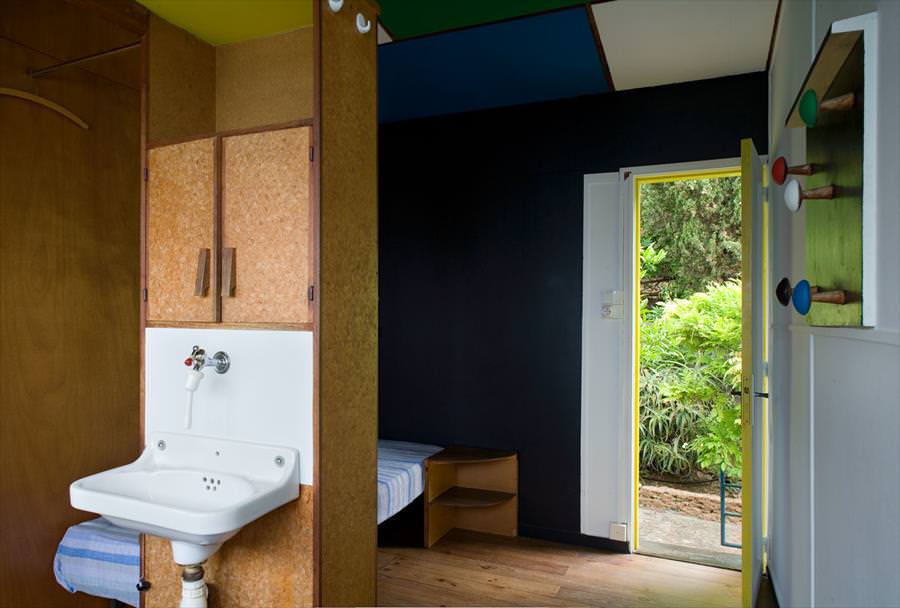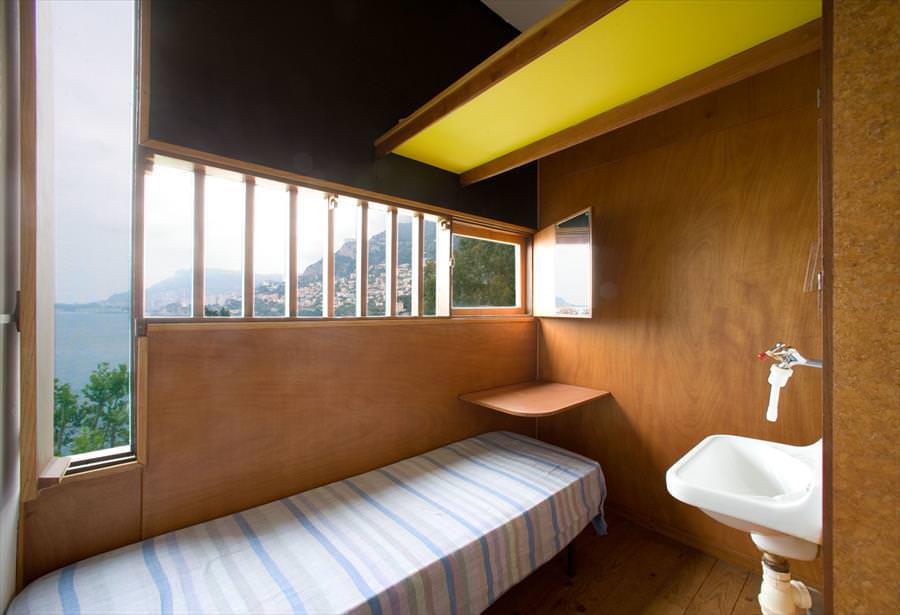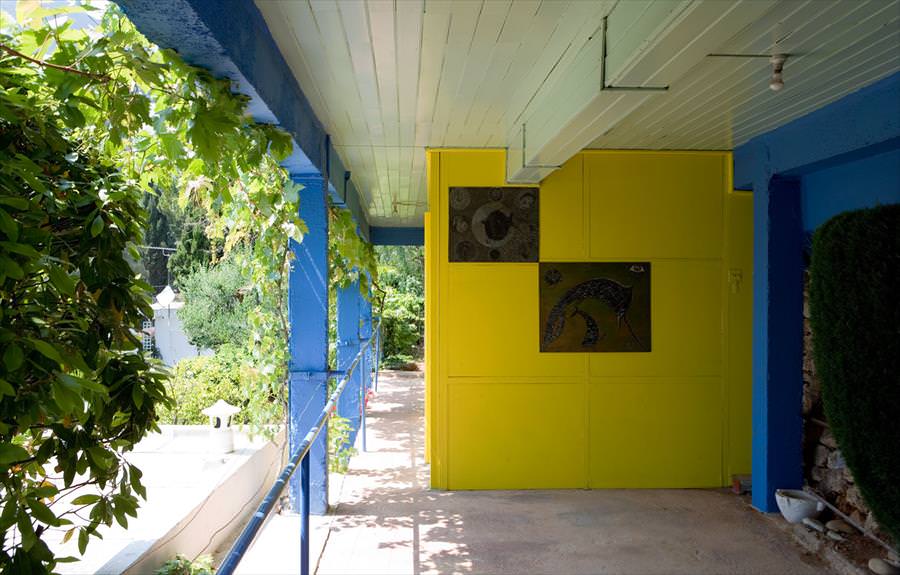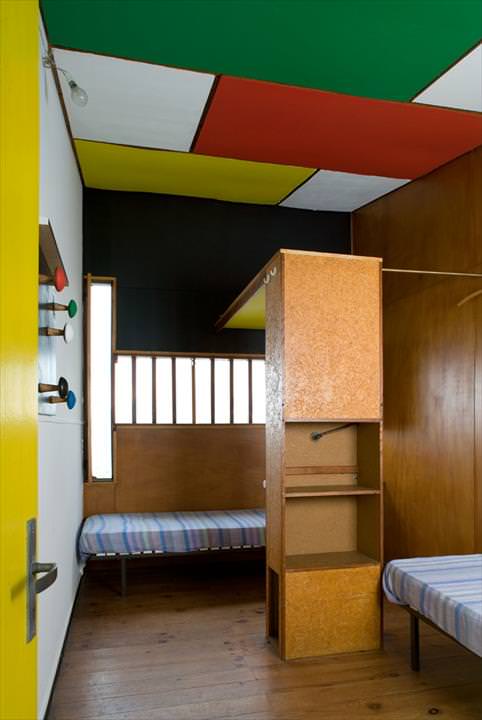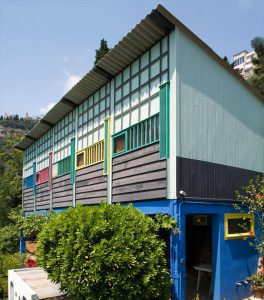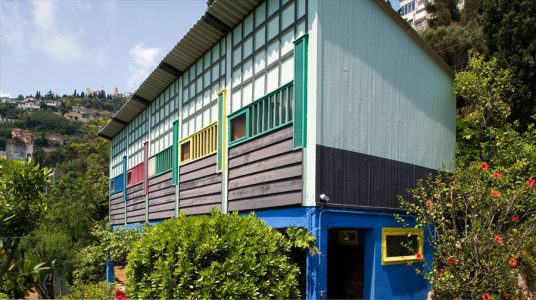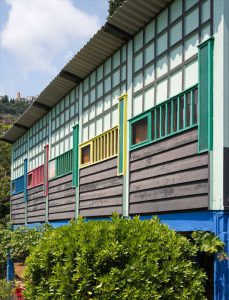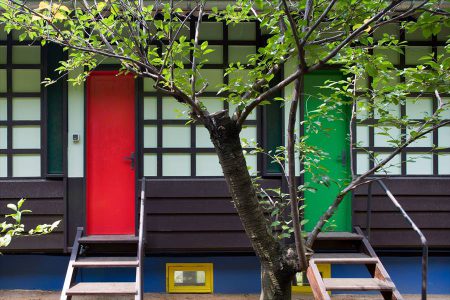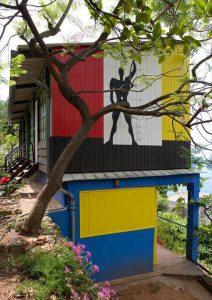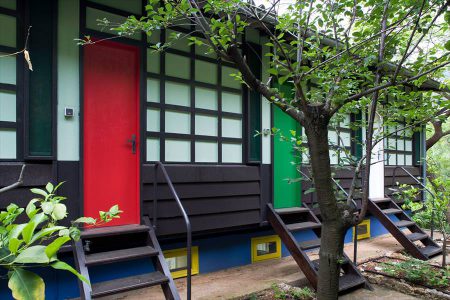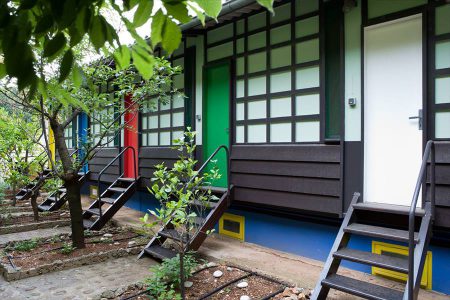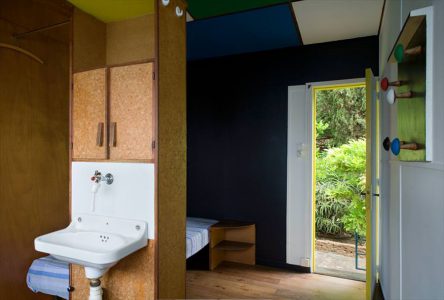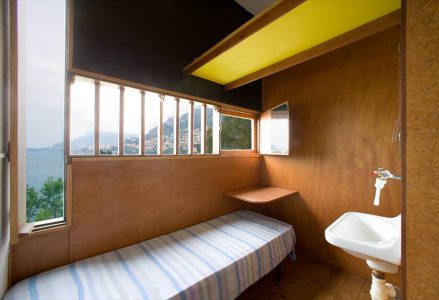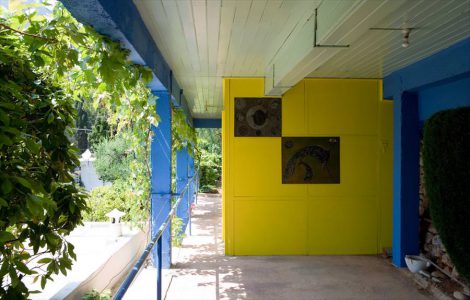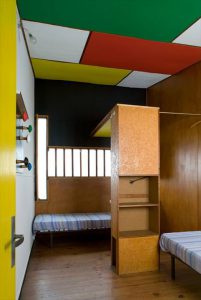Camping Units
Roquebrune-Cap-Martin, France, 1956
Commission
In 1948, Le Corbusier, a regular visitor to villa E-1027 designed and built by Eileen Gray and Jean Badovici between 1926 and 1929, befriended the Rebutato family who had opened on the site a modest restaurant called L’Étoile de Mer, facing the bay of Monaco.
Having returned to stay at L’Etoile de Mer every year, Le Corbusier decided in 1951 to build there a cabanon (log cabin). In exchange for the land made over by Thomas Rebutato he offered to build some holiday accommodation. His research on holiday homes led to the creation of the Camping Units in 1956.
From 1948 to 1950, Le Corbusier designed for the Cap Martin site the “ROQ” holiday resort project. As with La Sainte-Baume, these are apartments linked together by exterior staircases and with lifts accessible from underground galleries. The sloping ground allowed the creation of duplex housing with Modulor dimensions. Opposed to the anarchic development of coastal building, Le Corbusier chose to use vaulted roofing and adjoining houses. As this project led to nothing, Le Corbusier designed another one called “ROB” from 1952 to 1955. As with the ROQ model, but in a simplified version, this provided for five duplex holiday homes. In 1954 this project was also abandoned when the area was hit by a violent storm.
The architect’s studies laid the foundations for the Camping Units of 1956. In exchange for a plot for his Cabanon, Le Corbusier created five Camping Units. The Corsican carpenter Charles Barberis was in charge of the building work, which took up certain features of the Cabanon‘s interior layout. These units illustrate Le Corbusier’s research on minimum housing and modular, economical leisure housing adapted to seaside holidaying.
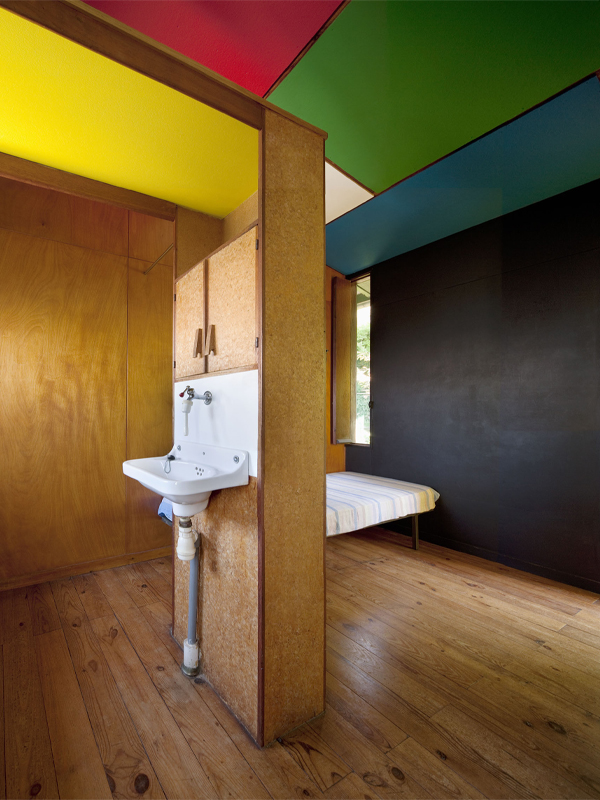
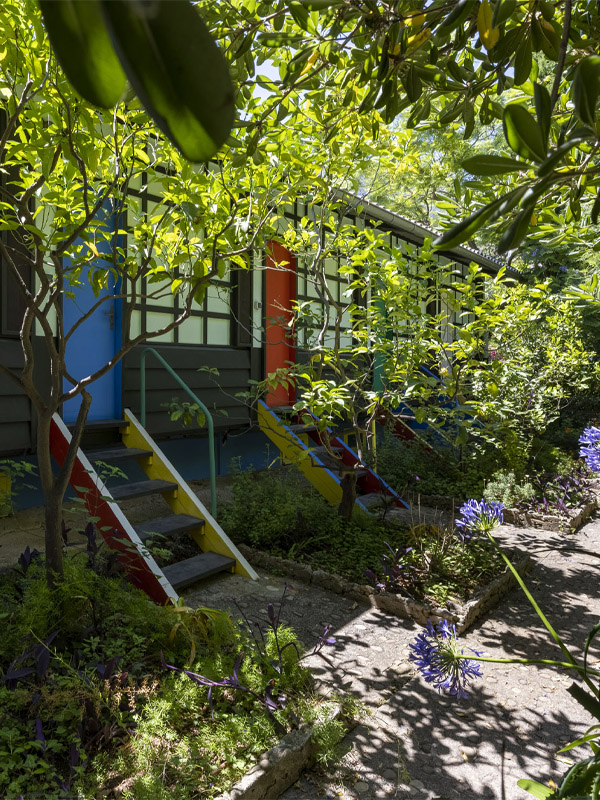
Project
Measuring 8 sq m and using the proportions of the Modulor (2.26 m x 3.66 m x 2.26 m), a unit with individual beds could accommodate two people at a time. Units were reached by small staircases. Nature was an integral part of the project; large windows framed the landscape facing the sea.
This is the serial version of Le Corbusier’s minimal accommodation, offering “in volume and layout the comfort resources of a luxury cabin on board a liner”.
So as to keep within Le Corbusier’s budget, Charles Barberis simplified the Camping Units principle. The building, initially designed at ground level, was finally mounted on pilotis. Le Corbusier entrusted Charles Barberis with the management of the site so that he himself might concentrate on the polychromy of the ceilings and the exterior joinery, executed in bright colours.
The figure of the Modulor on the north gable, repaired in the last restoration, was painted by Thomas Rebutato.
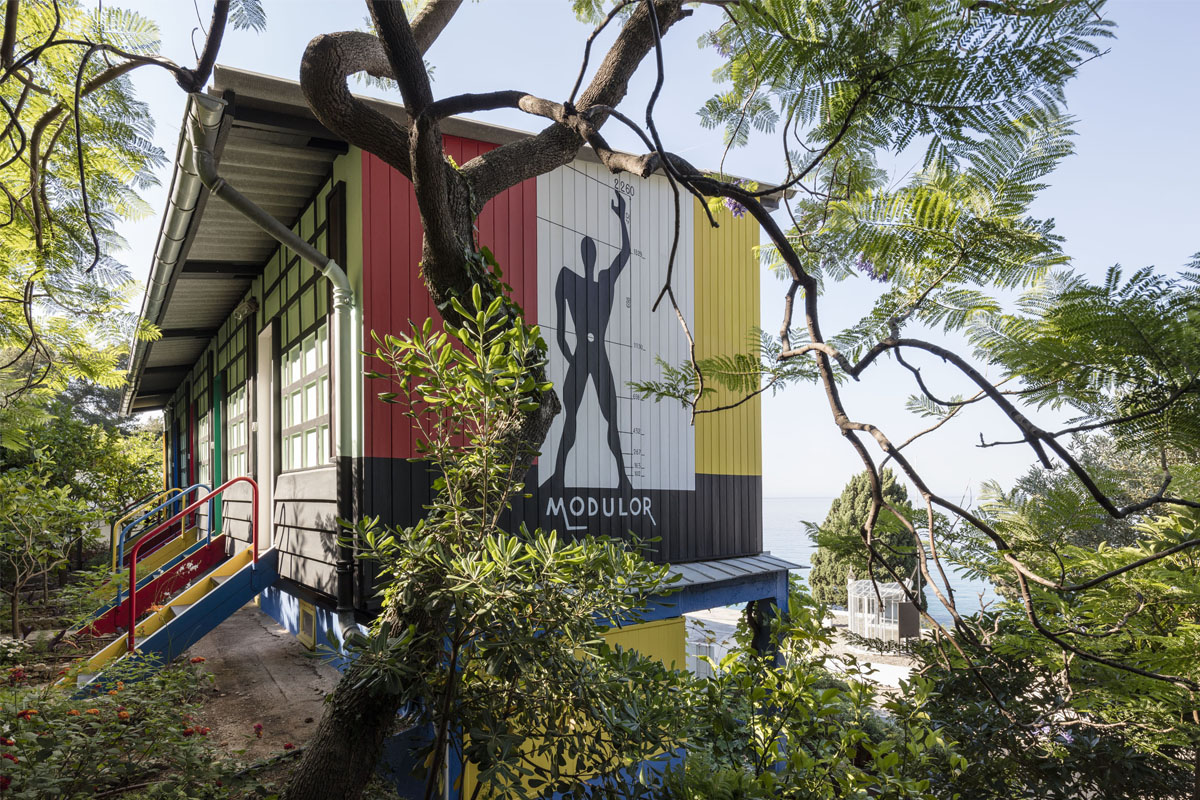
Subsequent History
The Camping Units have been a protected site since 1994. They were repainted in 2003 and restored between 2016 and 2017. Since 2022, they have been classified in their entirety as historic monuments and form part of the Cabanon Le Corbusier in the Series inscribed on the World Heritage List in 2016.
